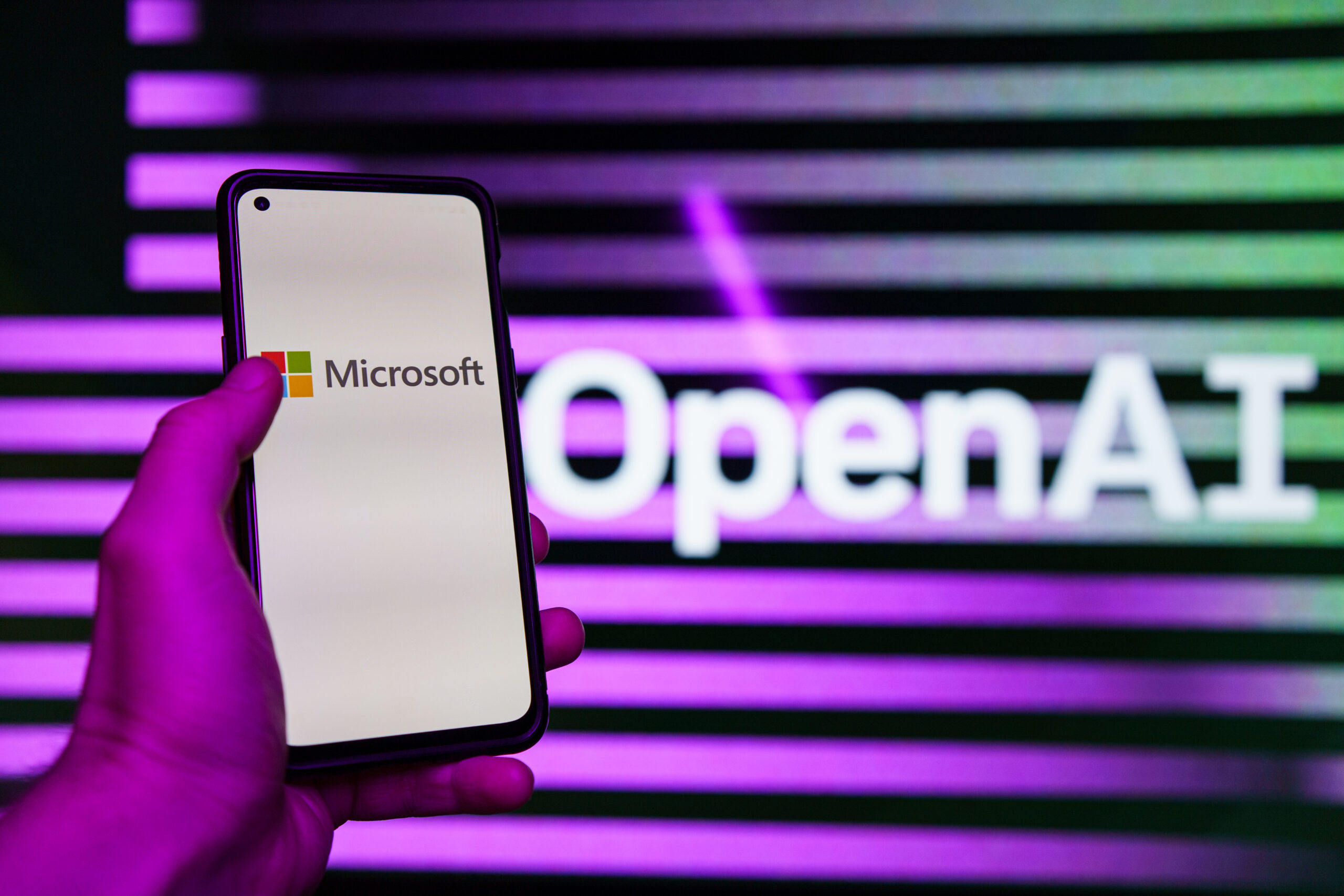As you navigate the rapidly evolving landscape of artificial intelligence, you may have noticed a significant shift in the relationship between two major players: Microsoft and OpenAI. Once united in a symbiotic partnership, these tech giants are now positioning themselves as potential rivals in the race for AI dominance. This article explores the changing dynamics between Microsoft and OpenAI, examining how their strategies have diverged and the implications for the broader AI industry. You’ll gain insight into Microsoft’s efforts to develop proprietary AI models, OpenAI’s push for greater independence, and how these moves are reshaping the competitive landscape in artificial intelligence.
The Rise of the Microsoft-OpenAI Alliance

A Strategic Partnership Forms Between Microsoft and OpenAI
In 2019, Microsoft and OpenAI forged a groundbreaking alliance that would reshape the AI landscape. This partnership saw Microsoft invest a staggering $1 billion in OpenAI, signaling a deep commitment to advancing artificial intelligence technology. The collaboration aimed to combine Microsoft’s vast cloud computing resources with OpenAI’s cutting-edge AI research capabilities.
Mutual Benefits and Shared Goals Between Microsoft and OpenAI
The alliance offered significant advantages for both parties. Microsoft gained access to some of the most advanced AI models in development, enhancing its Azure cloud platform and bolstering its position in the competitive tech market. OpenAI, in turn, leveraged Microsoft’s powerful computing infrastructure to train and deploy its increasingly complex AI systems, including the GPT series.
Collaborative Achievements
Together, Microsoft and OpenAI achieved remarkable milestones. The partnership led to the development of GPT-3, one of the most sophisticated language models to date. Microsoft’s integration of OpenAI technology into its products, such as GitHub Copilot and Azure OpenAI Service, demonstrated the practical applications of their joint efforts. This symbiotic relationship seemed poised to dominate the AI field, setting new standards for innovation and technological advancement.
Microsoft and Its Shift Toward AI Self-Sufficiency
Developing Proprietary AI Models
Microsoft’s journey towards AI independence is marked by the development of its own proprietary models, such as the MAI series. This strategic move aims to reduce the tech giant’s reliance on OpenAI’s GPT technology, signaling a significant shift in their partnership dynamics. By investing in in-house AI capabilities, Microsoft is positioning itself as a formidable competitor in the AI landscape.
Diversifying AI Partnerships
In a bid to strengthen its AI portfolio, Microsoft is expanding its horizons beyond OpenAI. The company is actively courting other AI startups, with reports suggesting engagement with firms like DeepSeek. This diversification strategy serves a dual purpose: enhancing Microsoft’s cloud and enterprise offerings while reducing dependency on a single AI provider.
Bolstering Azure-based AI Services
As part of its push for self-sufficiency, Microsoft is doubling down on integrating AI capabilities into its Azure cloud platform. This move directly competes with OpenAI’s growing enterprise offerings, as Microsoft aims to provide comprehensive AI solutions within its existing ecosystem. By leveraging its vast cloud infrastructure and enterprise relationships, Microsoft is positioning Azure as a one-stop shop for AI services, from machine learning to natural language processing.
OpenAI and the Quest for Autonomous Enterprise Solutions
Expanding Beyond GPT
OpenAI, once primarily known for its groundbreaking GPT language models, is now broadening its horizons in the enterprise space. The company is actively developing a suite of AI solutions that go beyond natural language processing, aiming to compete directly with Microsoft’s Azure-based AI services. This strategic shift reflects OpenAI’s ambition to establish itself as a comprehensive AI provider, capable of addressing a wide range of business needs independently.
Challenging the Status Quo
By strengthening its enterprise offerings, OpenAI is not just expanding its product line—it’s challenging the very ecosystem it helped create. The company is exploring innovative ways to integrate its AI solutions more broadly across various industries, from healthcare to finance. This move signals a clear intent to reduce reliance on partners like Microsoft and carve out a larger slice of the lucrative enterprise AI market.
Balancing Collaboration and Competition
As OpenAI pursues greater autonomy, it faces the delicate task of maintaining existing partnerships while competing for market share. The company must navigate the fine line between collaboration and competition, leveraging its cutting-edge research to develop unique value propositions that set it apart in an increasingly crowded field. This balancing act will be crucial in determining OpenAI’s long-term success as an independent force in the AI landscape.
The Intensifying Battle for AI Supremacy for Microsoft and OpenAI
Microsoft and the Strategic Pivot
As the AI landscape evolves, Microsoft is making bold moves to secure its position. The tech giant is developing proprietary AI models, such as the MAI series, to reduce its dependence on OpenAI’s GPT technology. This shift signals Microsoft’s ambition to become a self-sufficient AI powerhouse rather than merely facilitating others’ advancements.
OpenAI and its Quest for Independence
Meanwhile, OpenAI is transforming from collaborator to competitor. The company is bolstering its enterprise offerings and exploring ways to integrate its AI solutions more broadly. This push for autonomy puts OpenAI in direct competition with Microsoft’s Azure-based AI services, reshaping their once-symbiotic relationship.
A Fragmenting Ecosystem
The AI arena is becoming increasingly crowded and competitive. Tech behemoths like Google, Meta, and Apple are ramping up their AI efforts, adding to the pressure. Microsoft’s diversification of AI partnerships, including courting startups like DeepSeek, further fragments the landscape. This volatility underscores the fluid nature of alliances in the rapidly evolving world of artificial intelligence.
As the battle for AI supremacy intensifies, we’re witnessing a seismic shift in the tech industry. The outcome of this high-stakes competition will likely shape the future of AI and its applications across various sectors.
The Fragmented Future of AI Alliances
As the AI landscape evolves, we’re witnessing a seismic shift in partnerships and rivalries. The once-solid alliance between Microsoft and OpenAI is giving way to a more complex, competitive ecosystem. This transformation highlights the volatile nature of tech collaborations in the rapidly advancing field of artificial intelligence.
Shifting Sands of Cooperation
The tech giants’ changing relationship exemplifies how quickly alliances can morph in the AI world. Microsoft, originally OpenAI’s primary backer, is now developing its own AI models like the MAI series. This move signals a desire for self-sufficiency and reduced dependence on external technologies. Meanwhile, OpenAI is expanding its enterprise offerings, potentially competing with Microsoft’s Azure-based services.
A Crowded Playing Field
The AI arena is becoming increasingly fragmented as more players enter the game. Google, Meta, and Apple are ramping up their AI efforts, creating a more diverse and competitive landscape. This proliferation of AI initiatives is driving innovation but also complicating the web of alliances and rivalries.
Implications for the Future
As partnerships evolve and companies seek greater autonomy, we can expect a more dynamic AI ecosystem. This fragmentation may lead to accelerated innovation as firms compete to differentiate themselves. However, it could also result in compatibility issues and a more complex market for end-users to navigate. The future of AI alliances will likely be characterized by fluid partnerships and strategic pivots as companies jockey for position in this high-stakes technological race.
Final Analysis
As you navigate the evolving AI landscape, it’s crucial to recognize the shifting dynamics between major players like Microsoft and OpenAI. Their transition from partners to potential rivals underscores the intense competition and rapid changes in the field. This development will likely accelerate innovation, offering you more diverse AI solutions and services. However, it also highlights the importance of carefully evaluating your AI partnerships and investments. Stay informed about these industry shifts, as they will significantly impact the AI tools and platforms available to you in the coming years. The future of AI is being shaped by these evolving relationships, and your awareness will be key to leveraging its potential for your business or personal needs.
More Stories
Sisense Intelligence: Transforming Data into Action with Generative AI
Sisense Intelligence offers a seamless experience, allowing you to interact with data using natural language and generate insightful dashboards without the need for complex coding.
TikTok Empowers Users with AI-Driven Content Control Tools
TikTok is advancing digital content with AI-driven tools that give you more control over your viewing experience. On June 3,...
Nokia Powers Next-Gen PON and Wi-Fi 7 Evolution
With the introduction of their co-existence network solution, advanced Wi-Fi 7 gateways, and a high-density 25G PON line card, Nokia empowers operators to meet the increasing demand for robust, high-capacity networks.
Nordic’s nRF9151 Powers Japan’s IoT Future with NTT DOCOMO LTE-M Certification
With the recent LTE-M certification of Nordic’s nRF9151 System-in-Package (SiP), witness a transformation in cellular IoT deployment across various industries.
Perplexity Labs: Transforming Prompts into Dynamic Reports and Dashboards
As a professional in today’s fast-changing digital world, you need tools that go beyond traditional limitations. That’s where Perplexity Labs comes in—an innovative feature from Perplexity AI, available only to Pro subscribers. It turns your creative prompts into detailed reports, interactive dashboards, spreadsheets, and even full web applications.
Instagram Edits Empowers Creators with Pro-Level Mobile Video Tools
Instagram unveiled Edits, their groundbreaking mobile video editing app designed to elevate the quality of Reels and short-form videos to empower creators.


